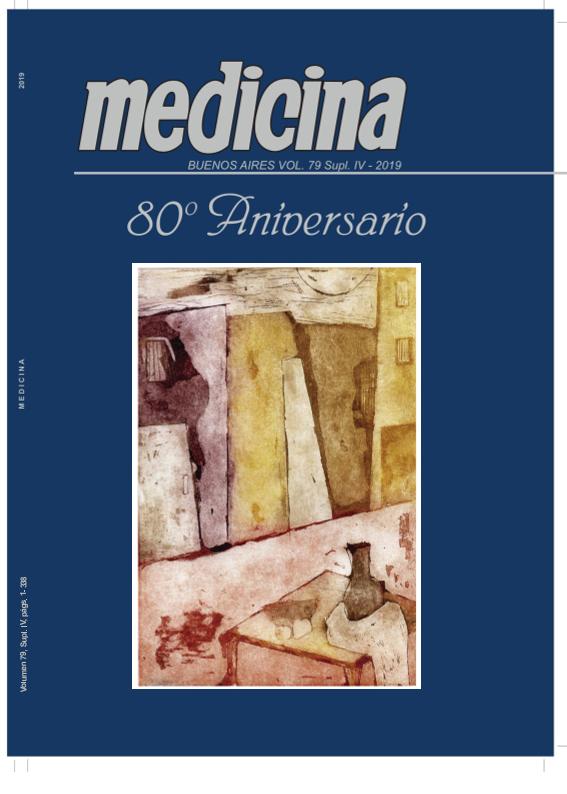Evento
ESCRTIII complex in Trypanosoma brucei: functional characterization of TbVps32
Tipo del evento:
Reunión
Nombre del evento:
LXIV Reunión Anual de la Sociedad Argentina de Investigación Clínica; LI Reunión Anual de la Asociación Argentina de Farmacología Experimental; XXI Reunión Anual de la Sociedad Argentina de Biología; XXXI Reunión Anual de la Sociedad Argentina de Protozoología; IX Reunión Anual de la Asociación Argentina de Nanomedicinas y VI Reunión Científica Regional de la Asociación Argentina de Ciencia y Tecnología de Animales de Laboratorio
Fecha del evento:
13/11/2019
Institución Organizadora:
Sociedad Argentina de Investigación Clínica;
Asociación Argentina de Farmacología Experimental;
Sociedad Argentina de Biología;
Sociedad Argentina de Protozoología;
Asociación Argentina de Nanomedicinas;
Asociación Argentina de Ciencia y Tecnología de Animales de Laboratorio;
The Histochemical Society;
Título de la revista:
Medicina (Buenos Aires)
Editorial:
Fundación Revista Medicina
ISSN:
0025-7680
e-ISSN:
1669-9106
Idioma:
Inglés
Clasificación temática:
Resumen
The ESCRT (Endosomal Sorting Complex Required for Transport) drives a diverse collection of membrane remodeling events such as endocytosis, autophagy, release of enveloped viruses, reorganization of the nuclear envelope and cytokinetic abscission. ESCRTIII is the effector sub-complex for the reason that is capable to form filaments and spirals, which produces membrane constrictions. Vps32 is the most abundant protein in ESCRTIII and its dynamic over membranes is given for its molecular structure that alternates between a monomeric-closed state to polymeric-open state. Here we investigate the conservation of Vps32 in Trypanosoma brucei and we found an orthologue sequence (TbVps32) that shows Snf7 domain and the characteristic secondary structure which gives evidence of a high conservation among eukaryotic cells. For T. brucei procyclic form (PCF) we designed an RNAi strategy where a 405bp of TbVps32 was cloned into the p2T7 vector (TbVps32-RNAi) allowing a tetracycline inducible downregulation. We confirmed the silencing of TbVps32 by RT-PCR. Moreover, after 72h the viability of the parasites was severely affected with a decrease cell growth and abnormal nucleus-kinetoplast configurations observed by fluorescence microscopy. To further understand the defects in cell cycle progression, knockdown cultures of TbVps32-RNAi were synchronized with HU (Hydroxyurea) and then evaluated by propidium iodide (PI) staining showing an increase of cells in G1 phase. On the other hand, we evaluated Vps32 role in vesicular trafficking by receptor mediated endocytosis of transferrin and fluid phase uptake of dextran and the results are under analysis. To perform a functional characterization, TbVps32 coding sequence was amplified fused to a hemagglutinin tag at N-terminal (HA-TbVps32) and subcloned into pLew100v5, an inducible overexpression vector. Until now, PCF 29-13 cell line and bloodstream form (BSF) Single marker cell line were transfected and are under clonal selection.
Palabras clave:
REMODELAMIENTO DE MEMBRANAS
,
CITOCINESIS
,
TRYPANOSOMA
Archivos asociados
Licencia
Identificadores
Colecciones
Eventos(INGEBI)
Eventos de INST.DE INVEST.EN ING.GENETICA Y BIOL.MOLECULAR "DR. HECTOR N TORRES"
Eventos de INST.DE INVEST.EN ING.GENETICA Y BIOL.MOLECULAR "DR. HECTOR N TORRES"
Citación
ESCRTIII complex in Trypanosoma brucei: functional characterization of TbVps32; LXIV Reunión Anual de la Sociedad Argentina de Investigación Clínica; LI Reunión Anual de la Asociación Argentina de Farmacología Experimental; XXI Reunión Anual de la Sociedad Argentina de Biología; XXXI Reunión Anual de la Sociedad Argentina de Protozoología; IX Reunión Anual de la Asociación Argentina de Nanomedicinas y VI Reunión Científica Regional de la Asociación Argentina de Ciencia y Tecnología de Animales de Laboratorio; Mar del Plata; Argentina; 2019; 123-123
Compartir




